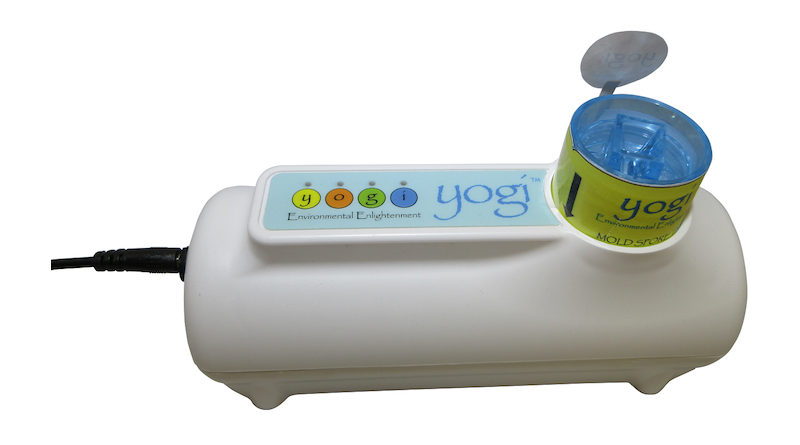Indoor Air Quality Testing: A Key Tool for Sustainable Building
By Gregory Sancoff
Ensuring good indoor air quality (IAQ) is a key part of energy-efficient and sustainable building practices. Although cutting-edge building designs are likely to incorporate ventilation systems that maintain proper exchange of indoor and outdoor air, it is important to ensure that indoor environments remain contaminant-free. A new generation of do-it-yourself testing makes it easy and economical for managers of eco-friendly buildings to assess for a wide range of contaminants. So, what are the challenges, and how can such new technology help?
IAQ & Green Buildings
Since the birth of green building certification programs, IAQ has been included as a key element. Proper IAQ must be maintained to construct healthy-built environments for occupants — a fact reflected in certifications such as LEED (Leadership in Energy and Environmental Design), developed by the U.S. Green Building Council. An important LEED certification credit, known as LEED IEQ 3.2, is specifically intended to reduce a building’s IAQ problems while promoting the comfort and well-being of its occupants.
For building managers, a major challenge in meeting such standards arises from the fact that even eco-friendly buildings may emit hazardous chemicals. For example, a 2017 study published in the journal, “Environment International,” concluded that indoor air pollution can be a problem in building units constructed to “green” standards. In the study, newly renovated housing in Boston was tested for nearly 100 chemicals, and several harmful substances were detected.
Further evidence of challenges facing managers of green buildings were spotlighted in a 2017 study published in “Building and Environment.” The use of waste-based materials, recycled materials or reused materials pose a risk — all may re-emit pollutants. Furthermore, the drive to supplement air conditioning with less energy-demanding solutions poses risks. Although it might be expected that air purification systems would benefit IAQ, such systems might not be as effective as they are claimed to be, or might remove only some pollutants and be ineffective for others. Additionally, some air cleaning and filtration techniques can become a source of pollution if not properly maintained.
Additionally, so-called green, natural, or organic products or materials can nonetheless contain or generate hazardous materials. For example, green cleaning products often contain fragrance chemicals that are primary pollutants, and that react with ozone to generate a range of secondary pollutants. Even zero- or low-volatile organic compound (VOC) paints, including those certified as green, can still emit VOCs similar to regular paints, as well as other problematic chemicals. On balance, “green” building materials and practices do not in themselves guarantee good IAQ.
For green building managers concerned with these issues, performing comprehensive IAQ testing has traditionally been a time-consuming and costly endeavor. Bringing in professionals on site to do the job can require an exorbitant financial investment. Meanwhile, the available consumer tests conventionally evaluate for a single contaminant, entailing a patchwork approach that is problematic from a logistical point of view.
Cutting-Edge Tests
Green building managers could benefit by evaluating a new generation of do-it-yourself, all-in-one air and water quality test kits. A typical kit of this type can detect the presence of several environmental contaminants and toxins in a green building — including mold, allergens, lead, asbestos, radon, VOCs and formaldehyde in the air as well as lead and copper levels in the drinking water — offering a comprehensive solution to IAQ testing. The tests offer professional results at a do-it-yourself price, providing actionable results that can be used to improve the health and well being of green building residents and workers. Related tests involve mobile kits that include a sampling instrument and durable, waterproof carrying case, and a rechargeable battery, so no onsite electricity is needed to collect samples.
These test kits are typically extremely simple to use and come with an easy-to-operate instrument and an intuitive, color-coded sampling system. Green building managers can collect their samples in just minutes, and then send the samples to an independent, accredited laboratory, which then emails a full lab report and results summary back to the manager. The manager will then be better able to decide on whether any subsequent remediation steps are necessary.
Given the importance of IAQ to green building practices, these new technologies offer a valuable potential tool for those charged with ensuring the health of occupants and workers.
Gregory Sancoff is CEO of Live Pure Inc., the designer and manufacturer of the yogi and yogi-go indoor air and drinking water quality assessment kits, which offer a complete solution for home and workplace environmental testing.

